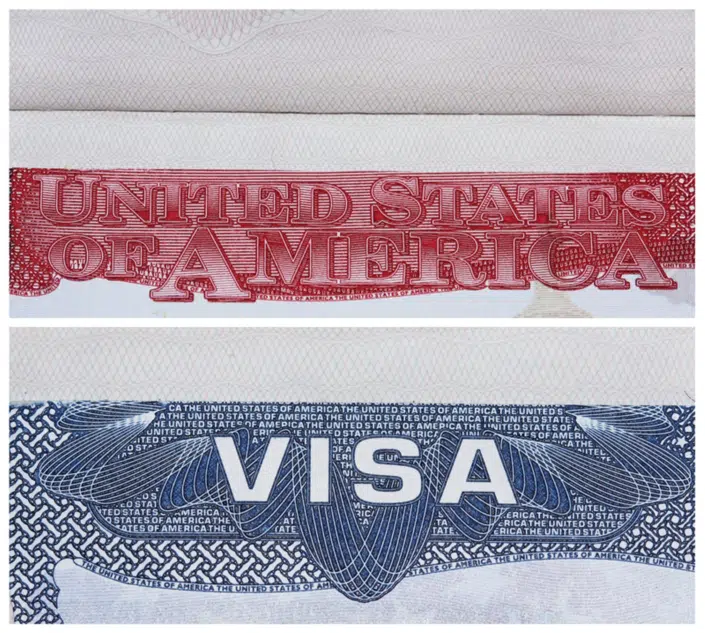Forståelse af E-2 visummet: En vej til investering og økonomisk vækst i USA.
Investorer med E-2-visum er en unik gruppe af personer eller firmaer, der kommer fra lande, der har handelsaftaler med USA. Deres mål er at bringe innovation og økonomisk vækst til USA ved at føre tilsyn med en ny eller eksisterende virksomhed, hvor de har foretaget en betydelig kapitalinvestering. E-2 visumstatus er også tilgængelig for personer, der er ansat af en investor eller et firma, der har en ledende stilling, eller som har specialiserede færdigheder, der er afgørende for virksomhedens funktion. Hovedkriteriet er, at investoren eller arbejdsgiveren skal være statsborger i det land, der har indgået aftalen, hvilket kan bekræftes med et pas fra det pågældende land.
Investeringskrav til E-2 visum
E-2-visuminvestoren skal sikre, at deres midler eller aktiver er direkte forbundet med dem. Dokumentation, der sporer oprindelsen af disse midler, er et obligatorisk krav. Det er værd at bemærke, at en investering indebærer eksponering for risiko. E-2-visuminvesteringen er ikke passiv, hvilket betyder, at investeringer udelukkende i ejendom eller fast ejendom, hvis de ikke kræver aktiv forvaltning og blot værdsættes over tid, ikke kvalificerer sig som en E-2-traktatinvestering. Desuden skal investoren demonstrere, at de har alternative indtægtskilder til at forsørge sig selv og deres familie, mens investeringen modnes.
Eksempler på egnede virksomheder til E-2-investeringer kan være:
- detailvirksomheder
- distributionsvirksomheder
- Restauranter
- Franchise
- produktionsvirksomheder
Disse typer virksomheder kræver aktiv ledelse og tilsyn, hvilket stemmer overens med E-2-visummets krav om en aktiv investering, hvor investoren er aktivt involveret i driften af virksomheden.
Ansøgning om E-2 investorvisum
Når E-2 visumansøgningen og de tilhørende dokumenter er udarbejdet, sendes de til den relevante amerikanske konsulære afdeling. Efter godkendelse udstedes visummet og placeres i ansøgerens pas, og hvis det er relevant, i eventuelle familiemedlemmers pas. En E-2-investors visum kan potentielt forblive gyldigt på ubestemt tid, forudsat at investeringen opretholdes, og virksomheden forbliver ikke-marginal. I nogle tilfælde kan E-2-visuminvesteringer skræddersys, så en investor og deres familie kan ansøge om et EB-5 investeringsvisum.
Familiemedlemmer er berettigede til E-2 visum
Indehavere af E-2 visa har ret til at tage deres nærmeste familiemedlemmer med til USA. Udtrykket "familiemedlemmer" henviser specifikt til visumindehaverens ægtefælle og eventuelle ugifte børn, der er under 21 år. Det er vigtigt at bemærke, at disse familiemedlemmer ikke behøver at have det samme statsborgerskab som den primære E-2-visumindehaver. Deres ret til at blive i USA under traktatstatus er dog betinget. Når et barn fylder 21 år eller bliver gift, mister det sin ret til at blive i USA under E-2-status. Det skal også nævnes, at hvert familiemedlems ophold i USA er betinget af deres egen separate visumansøgning, som skal indgives i forbindelse med den primære E-2 ansøgers ansøgning.
Nødvendig dokumentation for E-2 visum
At opnå en E-2-investering kræver en række dokumenter, såsom en velstruktureret forretningsplan, bevis for lovlig finansieringskilde, bevis for aktiv investering og meget mere. Vores advokatfirma er mere end klar til at hjælpe dig med at navigere gennem denne proces og tilbyder hjælp til at organisere og forberede din dokumentation.
Udnyt en immigrationseksperts ekspertise til din E-2 visumansøgning
At sikre sig et E-2 investorvisum kan være en kompleks opgave, der kræver en velgennemtænkt strategi, omhyggelig forberedelse og en omfattende forståelse af immigrationslove og -politikker. En erfaren immigrationsadvokat kan guide dig gennem denne indviklede proces og rådgive dig om vigtige overvejelser som investeringens kilde og størrelse, typen af virksomhed og investorens rolle i virksomheden.
Fra den indledende fase med at validere den lovlige kilde til midler til at demonstrere en betydelig investering i en bona fide-virksomhed, kan din advokat hjælpe med at forberede den nødvendige dokumentation og lave en overbevisende sag til det amerikanske konsulat. De kan også give strategisk rådgivning om, hvordan du opretholder din E-2-status, f.eks. ved at sikre, at virksomheden forbliver aktiv og ikke blot genererer en minimal indkomst.
Hvis dit langsigtede mål er at få permanent opholdstilladelse i USA, kan en immigrationsadvokat også rådgive dig om muligheden for at skifte fra et E-2-visum til et EB-5-investorvisum. Denne overgang kræver omhyggelig planlægning, da den indebærer yderligere forpligtelser såsom at investere det krævede minimumsbeløb og skabe mindst 10 nye fuldtidsjob.
At navigere i E-2 Visa-ansøgningsprocessen med hjælp fra en kyndig immigrationsadvokat øger ikke kun sandsynligheden for en vellykket ansøgning, men giver også ro i sindet ved at vide, at dine investerings- og immigrationsmål bliver håndteret af en ekspert.
Hvis du har brug for yderligere oplysninger, er du velkommen til at kontakte Kontakt os med vores certificerede specialist i immigrationsret.
Lande, der er berettigede til E-2 visum
Landespecifikke fodnoter
- Kina (Taiwan) - I henhold til afsnit 6 i Taiwan Relations Act (TRA), Public Law 96-8, 93 Stat, 14, og Executive Order 12143, 44 F.R. 37191, administreres denne aftale, der blev indgået med de taiwanske myndigheder før den 1. januar 1979, på ikke-statsligt grundlag af American Institute in Taiwan, et nonprofit selskab i District of Columbia, og udgør hverken en anerkendelse af de taiwanske myndigheder eller en fortsættelse af officielle forbindelser med Taiwan.
- Den Tjekkiske Republik og Den Slovakiske Republik - Traktaten med Den Tjekkiske og Slovakiske Føderative Republik trådte i kraft den 19. december 1992; den trådte i kraft for Den Tjekkiske og Slovakiske Republik som selvstændige stater den 1. januar 1993.
- Danmark - Traktaten, der trådte i kraft den 30. juli 1961, finder ikke anvendelse på Grønland.
- Frankrig - Traktaten, der trådte i kraft den 21. december 1960, finder anvendelse på departementerne Martinique, Guadeloupe, Guyana og Réunion.
- Japan - Traktaten, der trådte i kraft den 30. oktober 1953, blev gjort gældende for Boninøerne den 26. juni 1968 og for Ryukyuøerne den 15. maj 1972.
- Nederlandene - Traktaten, der trådte i kraft den 5. december 1957, gælder for Aruba og De Nederlandske Antiller.
- Norge - Traktaten, der trådte i kraft den 13. september 1932, gælder ikke for Svalbard (Spitzbergen og visse mindre øer).
- Spanien - Traktaten, der trådte i kraft den 14. april 1903, gælder for alle territorier.
- Surinam - Traktaten med Nederlandene, som trådte i kraft den 5. december 1957, blev gjort gældende for Surinam den 10. februar 1963.
- Det Forenede Kongerige - Konventionen, der trådte i kraft den 3. juli 1815, gælder kun for britisk territorium i Europa (de britiske øer (undtagen Irland), Kanaløerne og Gibraltar) og for "indbyggerne" i dette territorium. Dette udtryk, som det anvendes i konventionen, betyder "en person, der faktisk og permanent opholder sig på et bestemt sted og har sin bopæl der". For at være berettiget til status som erhvervsdrivende eller investor i henhold til traktaten skal udlændingen også være statsborger i Det Forenede Kongerige for at være omfattet af denne traktat. Personer, der er statsborgere i andre medlemmer af Commonwealth end Det Forenede Kongerige, kan ikke opnå status som erhvervsdrivende eller investor i henhold til traktaten i henhold til denne traktat.
- Jugoslavien - USA mener, at Den Socialistiske Føderative Republik Jugoslavien (SFRJ) er opløst, og at de efterfølgere, der tidligere udgjorde SFRJ - Bosnien-Hercegovina, Kroatien, Republikken Makedonien, Slovenien, Montenegro, Serbien og Kosovo - fortsat er bundet af den traktat, der var i kraft med SFRJ på opløsningstidspunktet.
- E-3-visummet er til statsborgere i Commonwealth of Australia, som ønsker at rejse ind i USA for at udføre arbejde inden for et "specialiseret erhverv". Udtrykket "specialerhverv" betyder et erhverv, der kræver teoretisk og praktisk anvendelse af højt specialiseret viden, og som minimum en bachelorgrad eller en højere grad i det specifikke speciale (eller tilsvarende) for at få adgang til erhvervet i USA. Definitionen er den samme som Immigration and Nationality Act-definitionen af et H-1B-specialerhverv.
- Bolivia - Bolivianske statsborgere med kvalificerende investeringer på plads i USA den 10. juni 2012 har fortsat ret til E-2 klassificering indtil den 10. juni 2022. De eneste bolivianske statsborgere (bortset fra dem, der er berettiget til afledt status på grundlag af et familieforhold til en E-2 hovedudlænding), der kan komme i betragtning til E-2 visa på nuværende tidspunkt, er de ansøgere, der kommer til USA for at deltage i E-2 aktiviteter til fremme af omfattede investeringer, der er etableret eller erhvervet før den 10. juni 2012.
- Ecuadorianske statsborgere med kvalificerende investeringer i USA inden den 18. maj 2018 har fortsat ret til E-2-klassificering indtil den 18. maj 2028. De eneste ecuadorianske statsborgere (bortset fra dem, der kvalificerer sig til afledt status baseret på et familieforhold til en E-2 hovedudlænding), der kan kvalificere sig til E-2-visa på nuværende tidspunkt, er de ansøgere, der kommer til USA for at deltage i E-2-aktiviteter til fremme af omfattede investeringer, der er etableret eller erhvervet før 18. maj 2018.
- Israel: I henhold til en traktat om venskab, handel og navigation mellem USA og Israel, der trådte i kraft den 3. april 1954, har statsborgere i Israel ret til E-1-status i forbindelse med traktathandel. Statsborgere i Israel har ikke ret til E-2-klassificering som investorer i henhold til denne traktat. Public Law 112-130 (8. juni 2012) tildeler israelske statsborgere E-2-status til investorformål, hvis den israelske regering giver lignende ikke-immigrantstatus til statsborgere i USA. Ministeriet har bekræftet, at Israel tilbyder gensidig investorbehandling til amerikanske statsborgere, og E-2-visum kan udstedes til israelske statsborgere fra 1. maj 2019.
- New Zealand: Public Law 115-226, der blev vedtaget den 1. august 2018, gav statsborgere fra New Zealand E-1- og E-2-status med henblik på traktathandel/traktatinvestor, hvis New Zealands regering giver lignende ikke-immigrantstatus til statsborgere fra USA. Ministeriet har bekræftet, at New Zealand tilbyder lignende nonimmigrant-status til amerikanske statsborgere, og at der kan udstedes E-visa til newzealandske statsborgere fra den 10. juni 2019.











